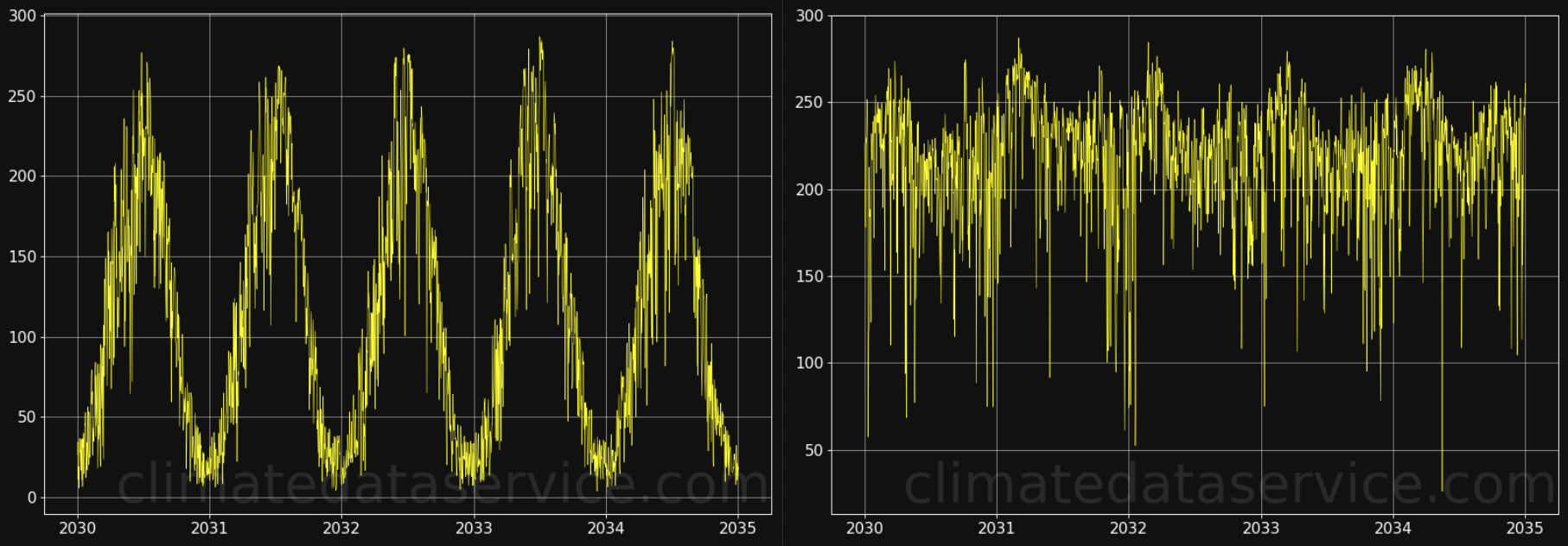12 September 2023
What climate change looks like in data
Most of us have heard of climate change but few of us get to see what that looks like in data. One way of looking at climate change is through the change in temperature in a simulation of the earths atmosphere. The simulation were are looking at here is the UK Met Office UKCP18Global model.
Temperature values in London
The first plot shows the temperature for two scenarios and fifteen models. A scenario is a set of assumptions put into models and are often categorised by the Representative Concerntration Pathway or RCP which makes simulations more suitable for comparison. The two scenarios shown here are RCP2.6 in blue, which represents the "very stringent" case where CO2 emissions are in decline by 2020 and RCP8.5 in orange where emissions continue to rise. The RCP8.5 is often considered to be the realistic worse case scenario.

How do we know the models are any good
The atmosphere is a chaotic system and it is impossible to accurately predict the weather more than a few days in advance. However, we know intuitively that there are more cold days in winter than in summer. It is both possible and useful to build scientific models that are statitically precise without being an accurate forecast of any specific single day. These models make predictions and can be tested against the statistics past weather observations. For example, the proportion of days colder or hotter.
So while the models are useful and statistically accurate, they produce a range of values for any date. This shows a measure of the uncertainty in the climate data.
Still can't see anything
It is hard to make any specific statement based on the data in the first plot but if, for every point, we calculate the mean value based on the previous two years we can start to see more clearly.

Now what does the data say?
With a two year rolling mean of the same two scenarios, RCP2.6 in blue and RCP8.5 in orange, each with 15 models we see several things. The models don't agree precisely but the trend for the orange RCP8.5 lines is a significant increase in temperature over time. Even the blue RCP2.6 show a general increasing trend. This is what climate change looks like in data.
Having on demand access to data allows users to investigate these changes in more detail and determine the impacts on their organisation. If you would like to know more, why not drop us a line.






